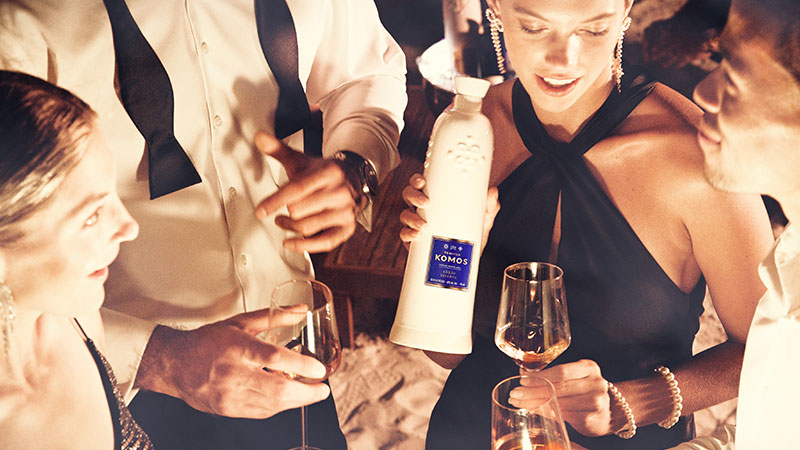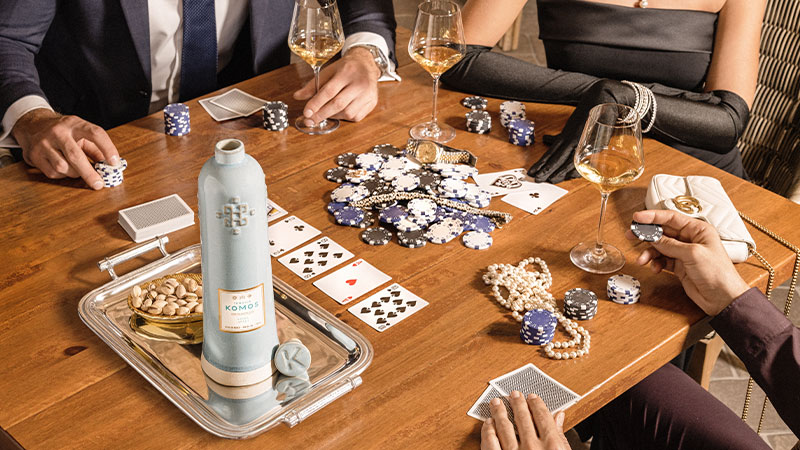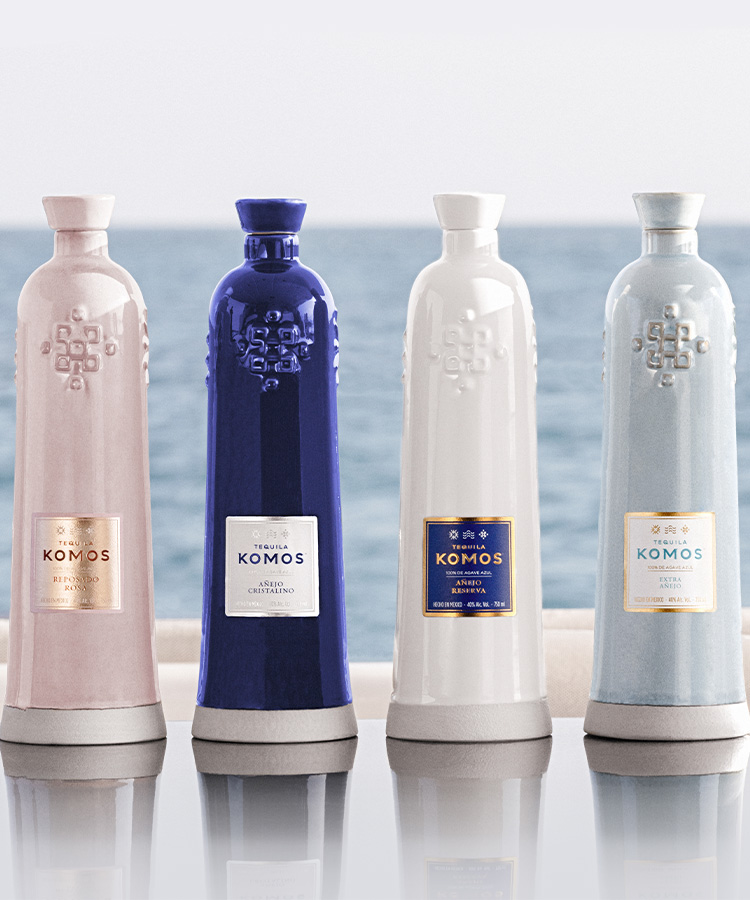
There’s something of a barrel bias in the spirit industry.
Speaking broadly, whiskey sees the inside of all sorts of casks, which may have previously held anything from Oloroso sherry to Armagnac. Meanwhile, tequila — if it’s aged at all — is typically splashed inside of an ex-bourbon barrel to produce a reposado or añejo that comes out a little darker, richer — and whiskey-ish.
That barrel aging has been used as a one-trick pony by so many tequila producers for so long makes the entry of Tequila Komos into the market all the more refreshing. The key difference is that Komos doesn’t approach barrel aging like a typical tequila producer but rather a winemaker. Its entire range of ultra-luxury tequilas — consisting of a Reposado Rosa, Añejo Cristalino, Añejo Reserva, Extra Añejo, and XO — experiences distinctive maturation in French oak casks that had previously held wine. Each expression adheres to a specific and meticulous aging process, resulting in distinctive flavor profiles. Some expressions take years to make, while others rest in both wine and spirits barrels. No matter the formula, one thing is certain: Komos has barrel-aged tequila down to a science.
The Barrel-Aged Difference
“Traditionally, people have equated the aging of tequila with bourbon barrels because that was just a done thing,” says Ria Soler, who serves as director of education for Komos. “What we now see with Komos aging in these beautiful wine barrels is that agave plays in absolutely beautiful and unexpected ways.”
Before we get carried away, let’s review how barrel aging works in the first place. Wood contains different chemical compounds — most famously, vanillin — that release with heat and contact with a high-proof spirit. How those flavors will be expressed is dependent on the type of wood used. “It’s generally thought that with French oak, you get a much softer interaction with the wood chemical compounds because the grain is tighter,” Soler says. “If you’re doing something at a softer, slower pace, generally you’re getting less of those high, harsh notes and more integration of flavor.”
Charring, the process by which the inside of the barrel will be burned to extract more of the wood’s flavor, also plays a pivotal role in the barrel-aging experience. Komos purposefully does not re-char the barrels it receives, which, in turn, tempers how the wood influences the spirit.
“We’re not re-charring, so we’re getting those really beautiful, soft, wine-forward flavors that are present in French oak without the addition of those harsh congeners that come in from the re-char. I think that makes a huge difference in the overall flavor.”
From Plant to Barrel
Of course, the Komos process begins with the raw spirit itself. The universal base for each of its five expressions is a blanco tequila made from agave grown in both the highlands and lowlands of Tequila. After harvest, the agave is roasted in volcanic stone ovens before being fermented with native yeast and double-distilled in pot stills.
Reposado Rosa

Where that spirit goes next — and for how long — is dependent on which Komos expression it will become. In the case of the Reposado Rosa, that means a two-month nap in French oak barrels that had previously held red wine, which imbues the once-clear spirit with a pleasing rosé hue and a nose that’s been described as cinnamon-dusted rose petals with caramel apples and fresh agave.
“Cabernet, Syrah, Merlot; those big heavy hitters right from Sonoma and Napa,” Soler says of the French oak’s pedigree. “We get some great tannic structure as well as some dark fruit and dark chocolate that sits really beautifully on top of that fresh, peppery agave.”
Añejo Cristalino

In turn, Komos’s Añejo Cristalino takes its plunge for at least one year in French oak white wine barrels and is charcoal filtered afterward to achieve its beautiful, clear appearance with tropical fruit aromas and flavors of pineapple and miso on the palate. By removing impurities the texture is rendered silky smooth and easy to drink.
“Think of a big, rich California Chardonnay,” Soler says of the Añejo Cristalino’s tasting experience. “We get a lot of beautiful tropical fruit from that wine-barrel aging as well as some gorgeous, really soft vanilla qualities.”
Añejo Reserva

Things take a darker turn — no pun intended — with its Añejo Reserva, which is matured for at least one year in not only French oak wine barrels but also casks that had previously held bourbon and Oloroso sherry, respectively. The result is a rich, aged tequila with toffee and coffee on the nose, leading to fruity, nutty flavors on the palate and a long, lingering finish typified by white pepper, amber, and allspice.
“Everybody loves sherry,” Soler says of the latter cask’s influence. “We’ve got that kind of toffee, coffee flavor and that really yummy dried fruit note that is super unique on top of agave… I just want it on a big rock after dinner for the rest of my life. So delicious.”
Extra Añejo

However, the barrel-aging pièce de résistance might be the Extra Añejo, which spends three years in French oak white wine barrels and American oak whiskey barrels that had previously contained bourbon or rye.
“It’s a very serious tequila, it’s got a lot of gravitas,” Soler says of the most aged expression in the Komos lineup, which starts with dried peach and pecan pie on the nose before moving into dried orange peels, toasted pecans, and candied ginger on the palate.
“There’s definitely some rye whiskey spice on the palate that I think is really pretty,” Soler continues.
Lastly, we’d be remiss not to mention the vessels Komos inhabits after it leaves the barrel. Every expression is housed in the brand’s beautiful, iconic bottle design, which is hand-dipped in a reactive glaze and oven-fired to give each a unique finish.
The Sum of Its Parts
For all that talk of flavors pulled from the barrel, there’s one element of Tequila Komos that its makers ensure is never lost in the aging process: the spirit itself.
“The through line of Komos is that our tequila still tastes like agave,” Soler says. “If you spend six to eight years growing your base product, why would you not want it to taste like what it is? That terroir aspect is so super important to what we do.”
Agave, but with a winemaker’s touch. And ready to be experienced now with a direct purchase from the Tequila Komos website.
